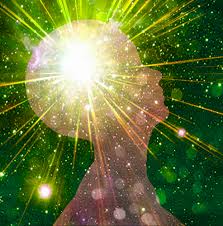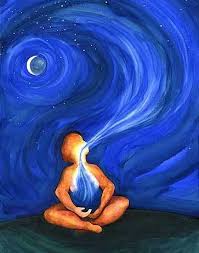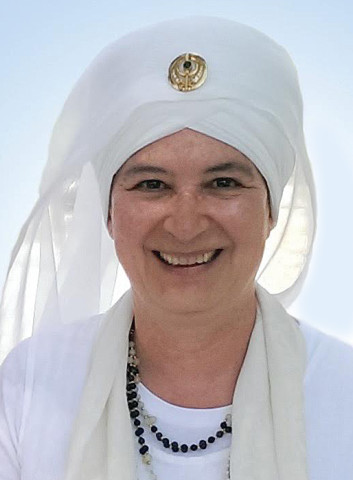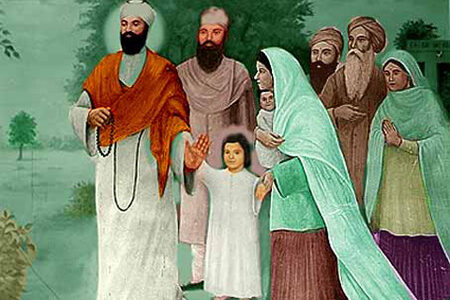by SS Dr. Shanti Shanti Kaur Khalsa, Espanola NM
Summer 2014
“The only beautiful thing that makes you human is compassion. Think about vengeance, lies, truth, God, greatness, think of anything. If you take compassion out of it, everything becomes bitter. Compassion is a value of life; it is power; it is God and meditation; it is truth. Compassion gives you the strength to go through suffering and yet feel no pain. There is absolutely no grace without compassion.”—The Siri Singh Sahib (July 11, 1986)
The capacity for compassion is innate in us as human beings. We are created with this capacity. Yet the experience and practice of compassion does not come simply because it is part of us. It comes because we cultivate it. Compassion is not just a value we have or an intention we hold.
The Role of the Vagus Nerve
Compassion is physically part of our makeup through the parasympathetic nervous system. This nervous system is formed by the central vagus nerve. The vagus nerve is one of 12 cranial nerves and is the only cranial nerve to come out of the brain and into the thorax. It travels via 12 branches to all the major organs to form the parasympathetic nervous system.
 In his book, Born to Be Good: The Science of a Meaningful Life (W. W. Norton, 2009), Dacher Keltner, director of the Social Interaction Laboratory at the University of California, Berkeley makes the connection between the vagus nerve and compassion. He links what modern science is just discovering to what yogis have known since ancient times: “Our research and that of other scientists suggest that activation of the vagus nerve is associated with feelings of caretaking and the ethical intuition that humans from different social groups (even adversarial ones) share a common humanity.”
In his book, Born to Be Good: The Science of a Meaningful Life (W. W. Norton, 2009), Dacher Keltner, director of the Social Interaction Laboratory at the University of California, Berkeley makes the connection between the vagus nerve and compassion. He links what modern science is just discovering to what yogis have known since ancient times: “Our research and that of other scientists suggest that activation of the vagus nerve is associated with feelings of caretaking and the ethical intuition that humans from different social groups (even adversarial ones) share a common humanity.”
People who have high vagus nerve activation in a resting state are likely to feel emotions that promote altruism—compassion, gratitude, love and happiness.” Very new science suggests that the vagus nerve may be closely connected to receptor networks for oxytocin, a neurotransmitter produced by the pituitary, associated with trust and maternal bonding.
In our teachings there are at least three ways in which compassion is cultivated through the central vagus nerve and its branches that form the parasympathetic nervous system: through the practice of Kundalini Yoga (breath, the rhythmic movement of kriya, meditation, mantra and deep relaxation); through the recitation of the Shabad Guru; and through Seva.
The Power of Mantra
“Mantra is complete; it is creative. Now let me tell you scientifically. The third vagus nerve pushes the central first and second vagus nerves. hen in the very cord system it stimulates the hypothalamus and it creates a wind pressure to direct the pituitary to redirect in the radiation to the pineal. hus the entire pineal radiation of the entire brain and the gray matter adjusts itself to three and a half cycle frequency. Thereby the neurons of the brain change into the patterns of creating ecstasy, which means infinity, which means your totality, which has to be covered by you. Thus your inner voice becomes stronger, acknowledging and computerizing the entire universe for you and against you. It gives you the neutral mind to decide so that you can have a virtuous life. This is the exact science of it.”—The Siri Singh Sahib (July 5, 1990)
As Gurmukh Yogis we understand that both the practice of Kundalini Yoga and recitation of the Shabad Guru invoke the command of the central vagus nerve and each of its 12 branches to create the experience of stillness, oneness, vastness and the realization that the other person is us. This is compassion cultivated through consistent sadhana, or practice of any of the methods of Kundalini Yoga or Nam Simran. It is what the Siri Singh Sahib calls “Body Language.”
 For example, when we take a deep breath and relax and expand the diaphragm, we instantly access the parasympathetic nervous system. Cortisol levels are reduced and the brain comes to balance.
For example, when we take a deep breath and relax and expand the diaphragm, we instantly access the parasympathetic nervous system. Cortisol levels are reduced and the brain comes to balance.
The Siri Singh Sahib tells us to “Inhale deeply with reverence, love, compassion and kindness. Communicate with your breath that it must give you peace of mind, peace on the mother planet Earth, peace and oneness with God and His creation.”
Or when we recite a mantra, a shabad, a bani, a pauri of Japji Sahib or read from the Siri Guru Granth Sahib. “If you just thicken the tongue a little bit in the back, and say, “Wha Hay Guru” the sound of Guru automatically takes the seventh vagus nerve and shatters the limitlessness of the human thought. Guru Shabad means actually from darkness light, but that is to explain to you to satisfy your intellect. Actually Shabad Guru is a body language.”
This body language—the recitation of Shabad Guru and the practice of Kundalini Yoga—cultivates compassion through more avenues than just the action of the vagus nerve and parasympathetic nervous system: they work the gunas, tattwas, chakras and each of the other nine bodies. Try out Compassion Kriya or Kriya for the Vagus Nerve Meditation taught by Yogi Bhajan.
About the Author
 SS Dr. Shanti Shanti Kaur Khalsa was ordained as a Sikh Dharma Minister in 1973 and has served as Assistant Secretary of Religion of Sikh Dharma since 2000, supporting the Office of the Secretary of Religion in building a global grassroots Ministry. She travels and works with Ministers around the world and is a member of the Sikh Dharma Ministry Newsletter team. She is also a member of the International Khalsa Council and an Officer of the Sikh Dharma International Board. She serves as Executive Director of the Guru Ram Das Center for Medicine & Humanology, founded by the Siri Singh Sahib to bring Kundalini Yoga into healthcare. She is a charter member of the International Association of Yoga Therapists and serves on its Advisory Board.
SS Dr. Shanti Shanti Kaur Khalsa was ordained as a Sikh Dharma Minister in 1973 and has served as Assistant Secretary of Religion of Sikh Dharma since 2000, supporting the Office of the Secretary of Religion in building a global grassroots Ministry. She travels and works with Ministers around the world and is a member of the Sikh Dharma Ministry Newsletter team. She is also a member of the International Khalsa Council and an Officer of the Sikh Dharma International Board. She serves as Executive Director of the Guru Ram Das Center for Medicine & Humanology, founded by the Siri Singh Sahib to bring Kundalini Yoga into healthcare. She is a charter member of the International Association of Yoga Therapists and serves on its Advisory Board.


